- 2024年-02月-16日:唐土名胜图会.初集.6卷(88P)
- 2024年-02月-16日:唐土名胜图会.初集.5卷(75P)
- 2024年-02月-16日:唐土名胜图会.初集.4卷(78P)
- 2024年-02月-16日:唐土名胜图会.初集.3卷(87P)
- 2024年-02月-16日:唐土名胜图会.初集.2卷(54P)
- 2024年-02月-16日:唐土名胜图会.初集.1卷(62P)
- 2024年-01月-13日:彩图版《中国国家地理百科全书》6、青海、宁夏、新疆、香港(106P)
- 2024年-01月-13日:彩图版《中国国家地理百科全书》5、四川、贵州、云南、西藏(122P)
- 2024年-01月-13日:彩图版《中国国家地理百科全书》4、湖北、湖南、广东、广西(106P)
- 2024年-01月-13日:彩图版《中国国家地理百科全书》3、浙江、安徽、福建、江西(106P)
- 2024年-01月-13日:彩图版《中国国家地理百科全书》2、内蒙古、辽宁、吉林、黑龙(106P)
- 2024年-01月-13日:彩图版《中国国家地理百科全书》1、总论、北京、天津、河北(105P)
- 2024年-01月-13日:《中国景色·彩图版》作者:单之蔷(385P)
- 2023年-12月-16日:宣大山西三镇图说.三卷.明.杨时宁编.景明万历时期刊本.玄览堂丛书.1941年(303P)
- 2023年-12月-16日:渝城图.约绘于1850-1900年.法国国家图书馆藏(12P)
- 2023年-12月-16日:行宫座落图.扬州名胜图.江南名胜图.四册.清代刊本(110P)
- 2023年-12月-16日:异域图志.一卷.剑桥大学图书馆藏.明刊孤本(206P)
- 2023年-09月-24日:泛槎图.含续泛槎图等.全集.清张宝撰.道光时期羊城尚古斋刊刻(500P)
- 2023年-09月-24日:法军远征在埃及考察研究作品集之埃及自然史板画(253P)
- 2023年-09月-21日:新镌海内奇观·六册(60P)
- 2023年-09月-21日:新镌海内奇观·五册(59P)
- 2023年-09月-21日:新镌海内奇观·四册(63P)
- 2023年-09月-21日:新镌海内奇观·三册(72P)
- 2023年-09月-21日:新镌海内奇观·二册(47P)
- 2023年-09月-21日:新镌海内奇观·一册(66P)
- 2023年-06月-14日:百幕大未解之谜(181P)
- 2023年-06月-14日:雍和宫集(1~20)(68P)
- 2023年-04月-25日:故宫宽幅照片(48P)
- 2023年-04月-14日:世界美术全集:建筑卷(97P)
- 2023年-04月-08日:中国建筑艺术史 (下册)(665P)
- 2023年-04月-08日:中国建筑艺术史 (上册)(584P)
- 2023年-04月-08日:建筑装修与装饰·中国建筑艺术全集 24(242P)
- 2023年-04月-05日:宅第建筑 4 南方少数民族·中国建筑艺术全集 23(330P)
- 2023年-04月-05日:宅第建筑 3 北方少数民族·中国建筑艺术全集 22(219P)
- 2023年-03月-27日:游遍世界(172P)
- 2023年-03月-27日:宅第建筑 2 南方汉族·中国建筑艺术全集 21(333P)
- 2023年-03月-27日:佛教建筑(2)(南方) (丁承樸)·中国建筑艺术全集(319P)
- 2023年-03月-23日:游遍中国(172P)
- 2023年-03月-16日:宅第建筑1 北方汉族·中国建筑艺术全集 20(325P)
- 2023年-03月-16日:风景建筑·中国建筑艺术全集 19(320P)
- 2023年-03月-10日:私家园林·中国建筑艺术全集 18(328P)
- 2023年-03月-10日:皇家园林·中国建筑艺术全集 17(249P)
- 2023年-03月-05日:道教建筑·中国建筑艺术全集 15(318P)
- 2023年-03月-05日:会馆建筑·祠堂建筑·中国建筑艺术全集 11(299P)
- 2023年-03月-02日:书院建筑·中国建筑艺术全集 10(320P)
- 2023年-03月-02日:坛庙建筑·中国建筑艺术全集 9(333P)
- 2023年-02月-28日:泰晤士世界历史地图集(360P)
- 2023年-02月-27日:清代陵墓建筑·中国建筑艺术全集 8(280P)
- 2023年-02月-27日:明代陵墓建筑·中国建筑艺术全集 7(328P)
- 2023年-02月-25日:元代前陵墓建筑·中国建筑艺术全集 6(313P)
- 2023年-02月-25日:桥梁、水利建筑·中国建筑艺术全集 5(334P)
- 2023年-02月-24日:古代城镇·中国建筑艺术全集 4(317P)
- 2023年-02月-24日:宫殿建筑(3) 沈阳·中国建筑艺术全集(312P)
- 2023年-02月-24日:宫殿建筑(2)(北京)·中国建筑艺术全集(311P)
- 2023年-02月-24日:宫殿建筑(1)(北京)·中国建筑艺术全集(247P)
- 2023年-02月-09日:镇江胜境图暨乾隆御题诗刻.清高宗弘历撰并书.民国拓本(6P)
- 2023年-02月-07日:西湖佳景.湖上扶摇子辑.彩色图绘套印本.1750(22P)
- 2023年-02月-04日:亚细亚大观.照片.亚细亚写-真大观社编.1935-1942(396P)
- 2023年-01月-29日:韩国舆地图.金鸿圭模绘.1893(13P)
- 2023年-01月-29日:《廣輿圖》二卷【明】朱思(237P)
- 2023年-01月-27日:古今历代中华地图(16P)
- 2023年-01月-17日:江戸絵図.鍬形紹真画(6P)
- 2023年-01月-13日:中國博物館藏畫.上海博物館藏畫(128P)
- 2023年-01月-12日:万国博覧会日本館仮図案(25P)
- 2023年-01月-03日:江苏至北京运河全图(13P)
- 2022年-12月-31日:東京真画名所図解.井上探景画(22P)
- 2022年-12月-29日:岸圃大观.乾坤.明彭汝楠辑.崇祯11刊(37P)
- 2022年-12月-24日:Matrícula de tributos.墨西哥.贡品录(32P)
- 2022年-12月-24日:北京皇城图(3P)
- 2022年-12月-17日:海底世界 珊瑚礁和鱼类的天堂(368P)
- 2022年-12月-15日:第八册(清时期)中国历史地图集(142P)
- 2022年-12月-15日:第七册(元 明)中国历史地图集(193P)
- 2022年-12月-15日:第六册(宋辽金)中国历史地图集(131P)
- 2022年-12月-15日:第五册(隋唐五代)中国历史地图集(150P)
- 2022年-12月-14日:第四册(南北朝)中国历史地图集(108P)
- 2022年-12月-14日:第三册(魏晋)中国历史地图集(91P)
- 2022年-12月-14日:第二册(秦汉)中国历史地图集(101P)
- 2022年-12月-14日:第一册(先秦)中国历史地图集(92P)
- 2022年-12月-10日:中国地方志辞典之二(405P)
- 2022年-12月-10日:中国地方志辞典之一(400P)
- 2022年-12月-04日:[典藏国家地理:中国版(下)].龚勋.全彩版(113P)
- 2022年-12月-04日:[典藏国家地理:中国版(中)].龚勋.全彩版(113P)
- 2022年-12月-04日:[典藏国家地理:中国版(上)].龚勋.全彩版(113P)
- 2022年-11月-23日:地理龙穴扼要 第10册(133P)
- 2022年-11月-23日:地理龙穴扼要 第9册(147P)
- 2022年-11月-23日:地理龙穴扼要 第8册(109P)
- 2022年-11月-23日:地理龙穴扼要 第7册(119P)
- 2022年-11月-22日:地理龙穴扼要 第6册(101P)
- 2022年-11月-22日:地理龙穴扼要 第5册(97P)
- 2022年-11月-21日:地理龙穴扼要 第4册(157P)
- 2022年-11月-21日:地理龙穴扼要 第3册(87P)
- 2022年-11月-20日:地理龙穴扼要 第2册(156P)
- 2022年-11月-20日:地理龙穴扼要 第1册(128P)
- 2022年-11月-07日:世界经济地理(245P)
- 2022年-11月-03日:环球国家地理百科全书之七(214P)
- 2022年-11月-03日:环球国家地理百科全书之六(400P)
- 2022年-11月-03日:环球国家地理百科全书之五(400P)
- 2022年-11月-03日:环球国家地理百科全书之四(400P)
- 2022年-11月-03日:环球国家地理百科全书之三(400P)
- 2022年-11月-03日:环球国家地理百科全书之二(400P)
泛槎图.含续泛槎图等.全集.清张宝撰.道光时期羊城尚古斋刊刻
《泛槎图》是一部版画集,收集了作者张宝所绘的103幅风景画。泛槎图全集(包含《泛槎图》《续泛槎图》《舣槎图四集》《续泛查图三集》《漓江泛棹图五集》《续泛查图六集》。此套全集大约是友羊城尚古斋刊刻于嘉庆至道光时期。
张宝(1763-1832年),字仙槎,上元(南京)人,工山水,好游览,足迹遍历十数省。此书刊印于嘉道年间,分六集,各图并识诗于上,每集附以名公巨卿、学者名流的题咏,书法精美,洋洋大观,均刻录刊印,因此,《泛槎图》也可称为一部书法丛刊。内有《泛槎图》、《续泛槎图》、《舣槎图四集》道光六年(1826)刻本、《续泛查图三集》、《续泛查图六集》道光十一年(1831)刻本、《漓江泛棹图五集》道光七年(1827)金陵刘文楷刻本。《泛槎图》一书,系白门张仙槎先生遨游天下之作,凡名山大川,展齿所经,辄绘以图,题以诗,凿险缒幽,雕章琢句,虽古之图灵光,铭剑壁者不过是焉。 图凡百有三,状烟云之变态,备海岳之奇观。抑且王公巨卿,题咏殆遍,真诗中有画,画中有诗也。惜枣梨已失,几有广陵散之憾矣。本斋广为搜罗,得原本六集, 以泰西照相石印之法,缩成袖珍,合订四册,移繁就简,以大易小,而于笔意之全神,仍不爽丝毫之末。公诸于世,不独卧游者取携甚便,而大著亦足与河山并寿 矣。爰赘数语,以志其成云。光绪六年秋八月,点石斋主人敬跋。
一百零三幅《泛槎图》,其中还有二十几幅是描绘南京名胜风景的。计第一集里有三幅,即《秦淮留别》、《石城蚤发》和《燕子风帆》。第四集《舣槎图》,正 如顾莼所题的“六朝余韵”四字所表示的那样,全部十八幅所绘的都是六朝名胜,其中如《锺阜穿云》、《雨花遇雨》、《北极登高》、《台城观渔》、《栖霞临 碑》、《莫愁评画》几幅,更是最为人熟知的南京名胜。《秦淮留别》、《北极登高》、《台城观渔》可说画得特别好。当年秦淮河画舫笙歌的热闹情形,台城柳色 和玄武湖风光,都令人仿佛可见。也许这些家乡的景色,正是我一向最熟悉和梦寐难忘的,因此看起来便觉得特别有趣了。
关于广东部分的名胜古迹,第二集《泛槎图》里有《扶胥望海》,这是描写在南海波罗庙前的海景;《罗浮访梅》,这是罗浮山的全景。第三集里的《端州采 砚》,事实上还画入了七星岩。《庾岭忆梅》,这是一幅山道行旅图。第六集里有一幅《五指擎天》,画的是海南岛的五指山。张仙槎并不曾到过海南,他在题辞上 特别说明这是根据别人所说的情形来画的,用来“补海外游踪所未及”。
最有趣的是第三集里的一幅《海珠话别》,和第二集里的《澳门远岛》。《海珠话别》可说是从河南望过来的羊城全景。珠江里不仅画有今日早已没有的“海 珠”,左侧还有飘着外国旗帜的十三行商馆。在城墙之内,从右至左,可以辨得出五层楼、花塔和光塔。可见他在结构上是费了一番心血的。另一幅《澳门远岛》也 很写实,教堂、山顶上的炮台、海中的多层甲板的外国帆船,表示他当年确是游过澳门的。
第三集《泛槎图》里,已经有一幅《独秀探奇》,画的是广西桂林的独秀峰。但是第五集《漓江泛槎》十二幅,所画的全是阳朔桂林的奇景。有《月牙远眺》, 有《风洞寻秋》。还有一幅《画山观马》,山壁上现九马之形,或立或卧,呼为“画山九马”。这是我所不知道的广西一处古迹,不知是在什么地方。
除了以上举出的之外,《泛槎图》所画的,还包括了五岳、长江和江南各处的名胜。还有北京的一部分,如《帝城春色》和《芦沟晓骑》、《瀛海留春》,描写 西山风景的《岫云折桂》之类。再加上西湖、黄鹤楼、膝王阁、兰亭、虎丘、小孤山、扬州虹桥,可说洋洋大观,中国各地的名胜古迹,大都被他画入《泛槎图》中了。
The “Pan Cha Tu” is a collection of prints, collecting 103 landscape paintings by author Zhang Bao. The complete collection of Fancha Tu (including “Fancha Tu”, “Continuation of Fancha Tu”, “Yicha Tu IV”, “Continuation of Fancha Tu III”, “Lijiang Fanzhao Tu V”, and “Continuation of Fancha Tu VI”). This complete collection is approximately published in the Shangguzhai of Youyang City during the Jiaqing Daoguang period.
Zhang Bao (1763-1832), also known as Xiancha, was born in Nanjing during the Upper Yuan Dynasty. He worked in the mountains and rivers, was easy to visit, and had traveled throughout more than ten provinces. This book was printed during the Jiadao period and is divided into six volumes. Each volume is accompanied by inscriptions from famous officials, scholars, and celebrities. The calligraphy is exquisite and magnificent, all of which are recorded and printed. Therefore, the “Pan Cha Tu” can also be called a calligraphy series. There are “Pan Cha Tu”, “Continued Pan Cha Tu”, “Yi Cha Tu Si Ji” engraved in the sixth year of Daoguang (1826), “Continued Pan Cha Tu San Ji”, “Continued Pan Cha Tu Si Ji” engraved in the eleventh year of Daoguang (1831), and “Li Jiang Pan Cha Tu Wu Ji” engraved in Liu Wenkai, Jinling (1827). The book “Fancha Tu” is the work of Mr. Zhang Xiancha from Baimen, who travels around the world. It is a masterpiece of famous mountains and rivers, where he spreads his teeth and passes through them. He often draws pictures, inscribes poems, carves dangerous and secluded passages, and carves chapters and sentences. Although the ancient picture is of spiritual light, those who inscribe sword walls are nothing more. There are three abnormal shapes of smoke and clouds in every picture, which is a wonder of the sea and mountains. Moreover, Wang Gongjuqing has recited numerous poems, and there are paintings in real poetry, as well as poems in paintings. Cherishing the loss of jujube pears, there are few regrets of Guangling scattering. This study has been extensively collected, resulting in the original six episodes, which were reduced to a small size using the method of Taixi’s photography and lithography. Four volumes were bound together, and the complexity was reduced to a simple one, with the change from large to small. However, in the entirety of the brushwork, there was still no satisfaction at all. Publicly available to the public, it is not only convenient for those who lie down and travel, but also sufficient for great works to live alongside rivers and mountains. Therefore, add a few words to express your aspiration and make it a cloud. In the autumn and August of the sixth year of the Guangxu reign, the owner of the Dianshizhai paid respects.
One hundred and three “Fancha Tu”, among which more than twenty depict the scenery of famous scenic spots in Nanjing. There are three paintings in the first episode of the plan, namely “Farewell to Qinhuai”, “Flea Hair in Shicheng”, and “Swallow Sailing”. The fourth episode of “Yi Cha Tu”, as indicated by Gu Chun’s four characters “Six Dynasties Rhyme”, all 18 paintings depict famous scenic spots of the Six Dynasties. Among them, “Zhongfu Pierces the Clouds”, “Rainflowers Encounter Rain”, “Climbing High in the Arctic”, “Watching Fishermen in Taicheng”, “Qixia Linbei”, “Mochou Pinghua”, and others are the most well-known scenic spots in Nanjing. The paintings of ‘Farewell to Qinhuai’, ‘Climbing the Arctic’, and ‘Watching Fishing in Taicheng’ can be said to be particularly good. The bustling scene of the Qinhuai River painted boats singing and singing back then, as well as the scenery of the willow trees in Taicheng and Xuanwu Lake, all seem to be visible. Perhaps the scenery of these hometowns is exactly what I have always been most familiar with and unforgettable, so it looks particularly interesting to me.
Regarding some scenic spots and historical sites in Guangdong, in the second episode of “Fancha Tu”, there is “Fu Xu Watching the Sea”, which depicts the sea view in front of the Polo Temple in the South China Sea; Luofu Visits Plum Blossom “, this is the panoramic view of Luofu Mountain. In the third episode of “Duanzhou Picking Inkstone”, in fact, it was also painted with the Seven Star Rock. Yu Ling’s Memories of Plum Blossoms “is a mountain road travel map. In the sixth episode, there is a painting called “Five Fingers Heavenly”, which depicts the Five Finger Mountains on Hainan Island. Zhang Xiancha has never been to Hainan, and in his inscription, he specifically stated that it was drawn based on what others had said, to “fill in the gaps of overseas travel”.
The most interesting ones are the painting “Farewell to Haizhu” in the third episode and “Far Island of Macau” in the second episode. Farewell to Haizhu “can be said to be a panoramic view of Yangcheng from Henan. The the Pearl River is not only painted with the “Haizhu” that has long been absent today, but also on the left is the Thirteen Traders’ Hall with foreign flags flying. Within the city wall, from right to left, one can distinguish the five story building, Flower Tower, and Light Tower. It can be seen that he has put in a lot of effort in terms of structure. Another painting, ‘Far Island of Macau’, is also very realistic. The church, the fortress on the mountaintop, and the multi decked foreign sailboat in the sea indicate that he did swim through Macau back then.
In the third episode of “Fancha Tu”, there is already a painting titled “Exploration of Duxiu”, which depicts the Duxiu Peak in Guilin, Guangxi. But the twelve paintings in the fifth episode of “The Li River Flows Through the Cha River” depict all the wonders of Guilin in Yangshuo. There are “Looking Forward at the Crescent Moon” and “Searching for Autumn in the Wind Tunnel”. There is also a painting titled ‘Painting Mountains and Watching Horses’, which depicts the shape of nine horses on the mountain wall, either standing or lying, and is called’ Painting Mountains and Nine Horses’. This is a historical site in Guangxi that I am not aware of, and I don’t know where it is.
In addition to the ones mentioned above, the paintings in the “Pan Cha Tu” also include scenic spots in various places such as the Five Mountains, the Yangtze River, and Jiangnan. There are also some parts of Beijing, such as “Spring Scenery of the Imperial City”, “Riding in the Dawn of Lugou”, “Leaving the Spring in the Yinghai Sea”, and “The Clouds of Xiu Rui Gui” that depict the scenery of the Western Mountains. In addition, the West Lake, Yellow Crane Tower, Knee King Pavilion, Lanting, Huqiu, Xiaogushan, and Yangzhou Hongqiao can be said to be magnificent. Most of the famous scenic spots and historical sites in various parts of China have been painted by him in the “Pan Cha Tu”.




























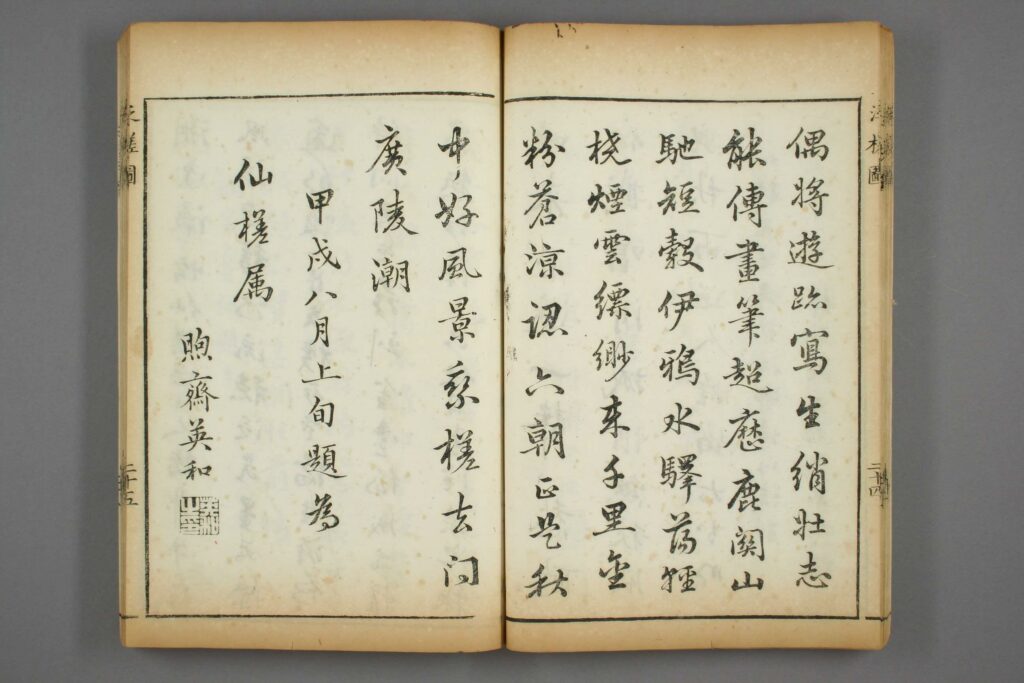

























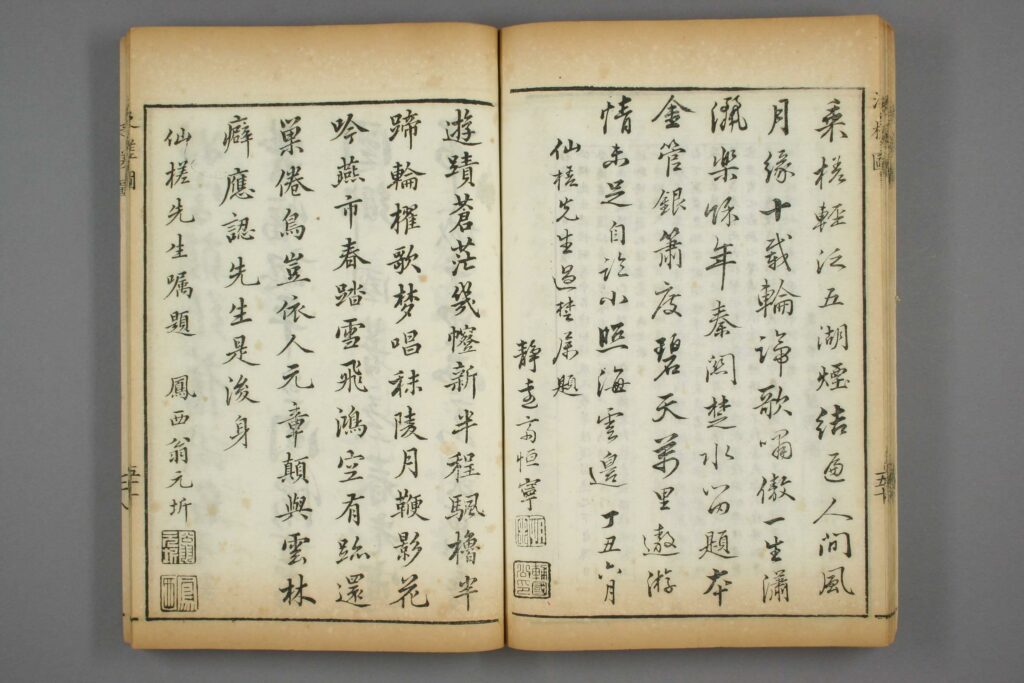


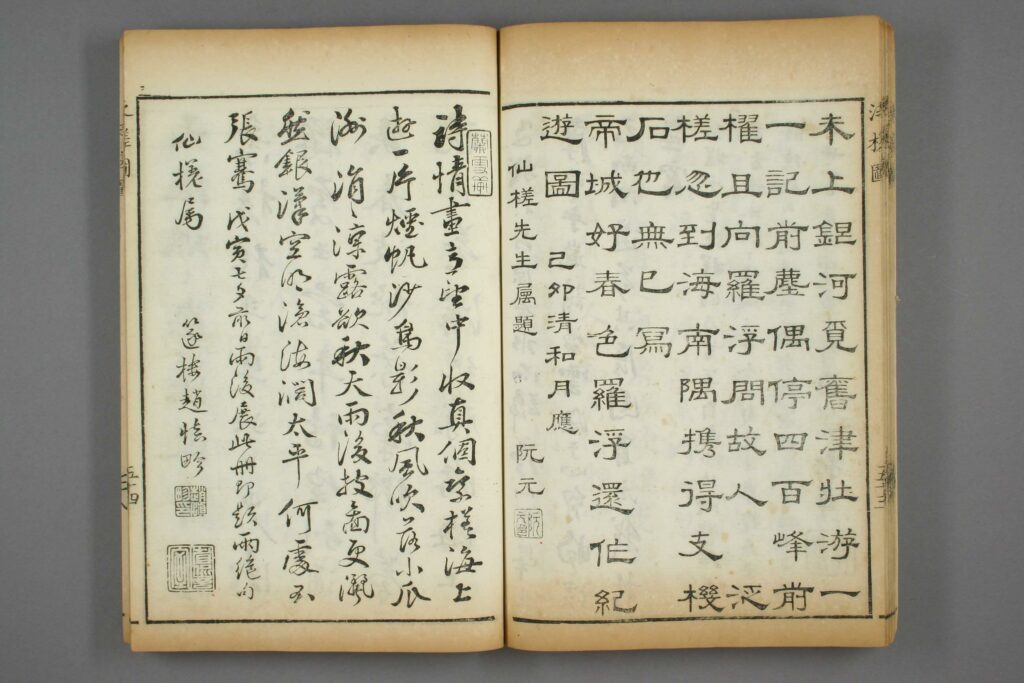











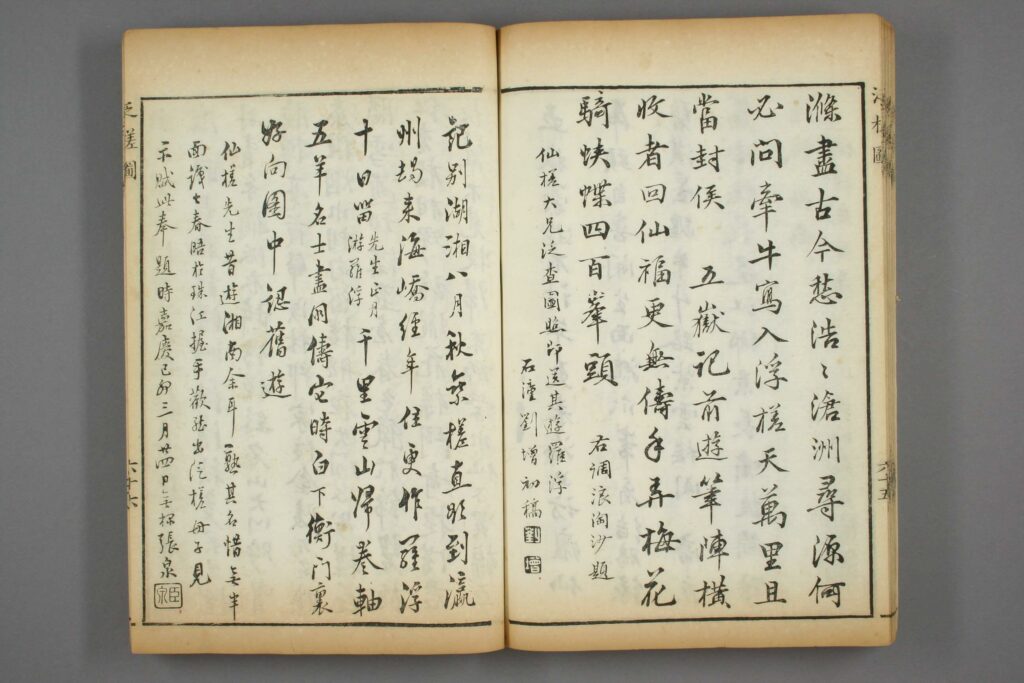































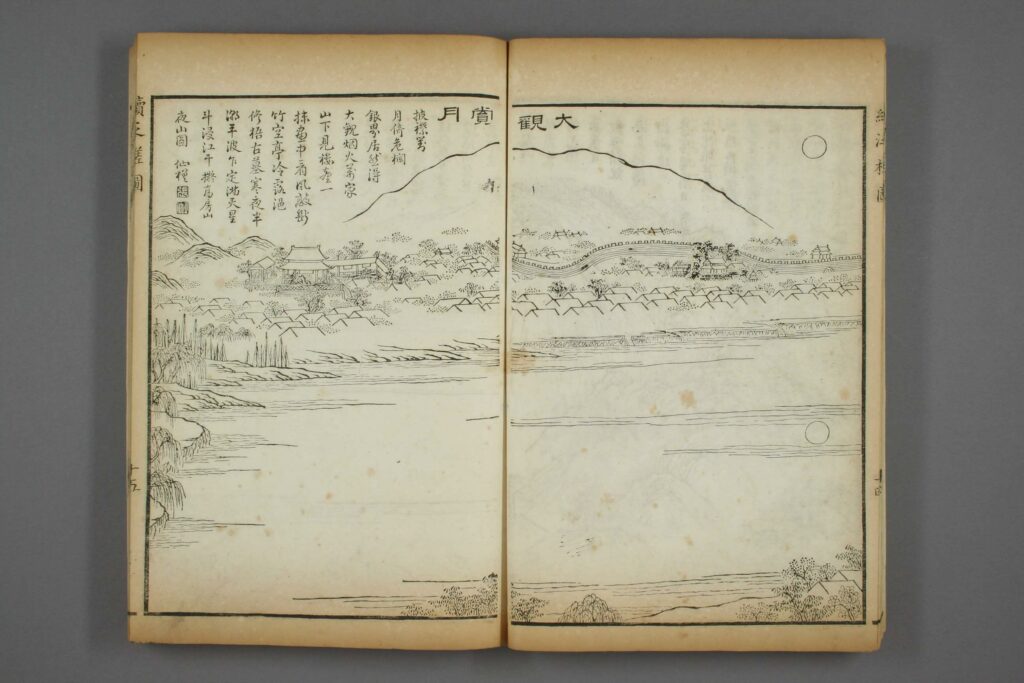













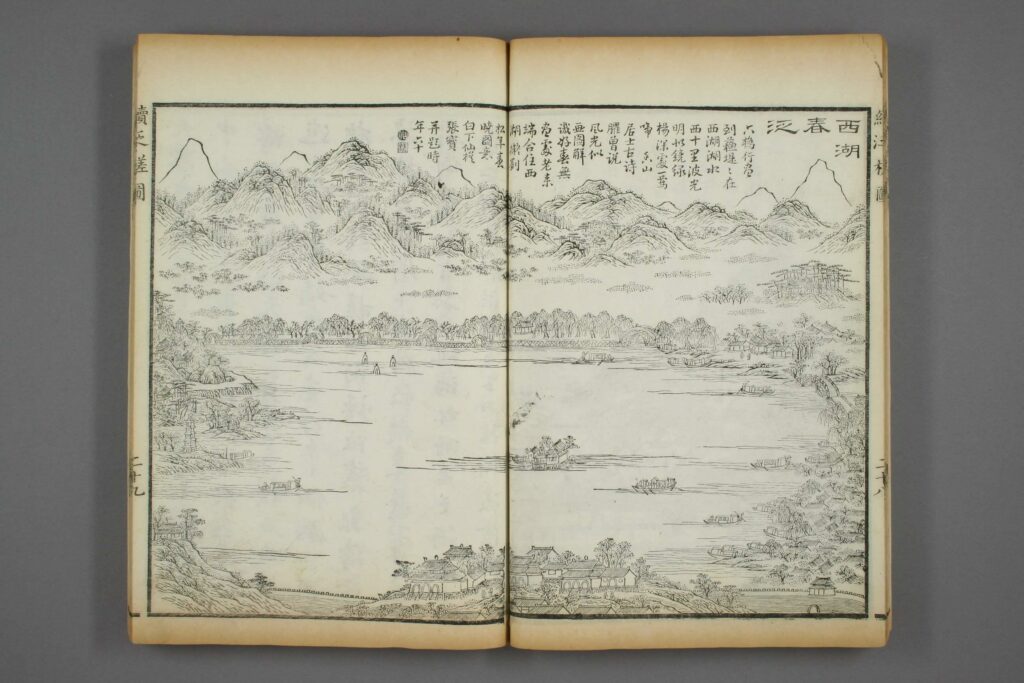

































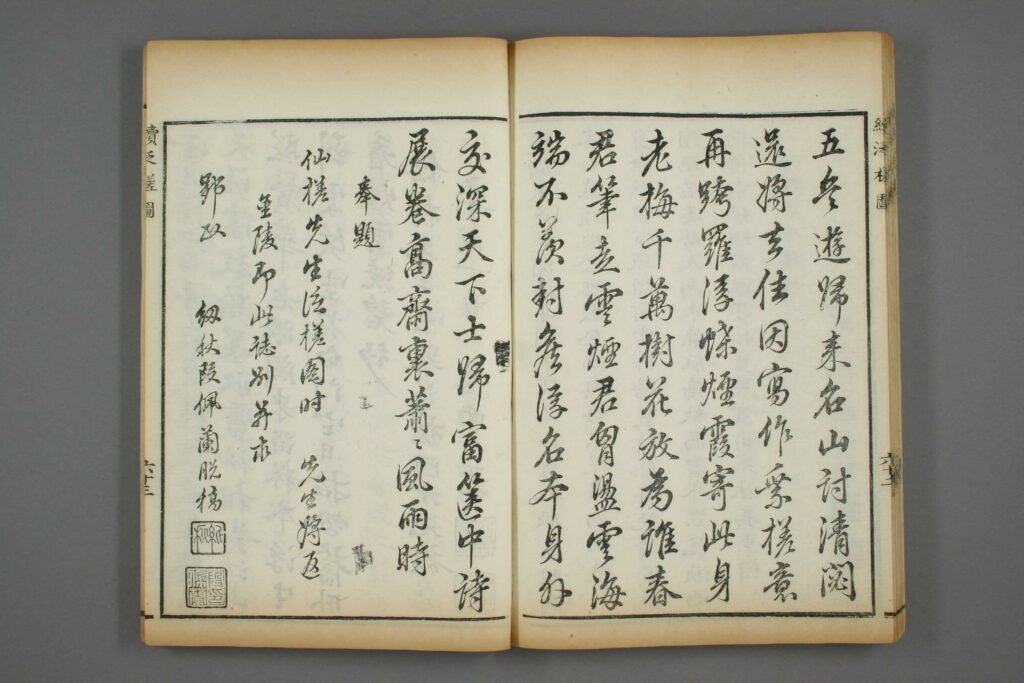















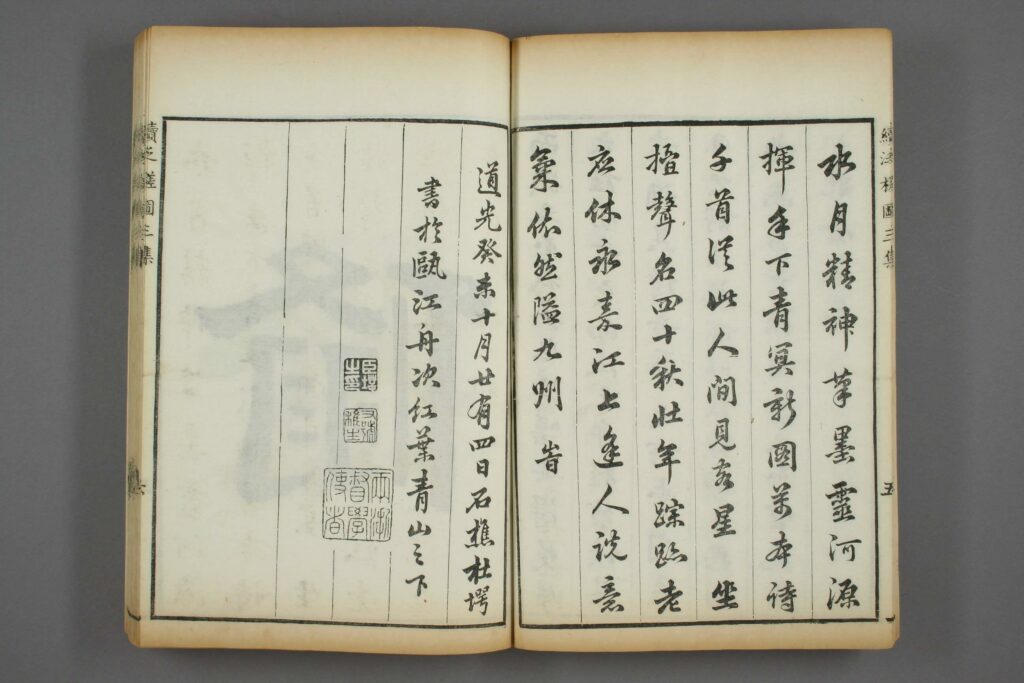











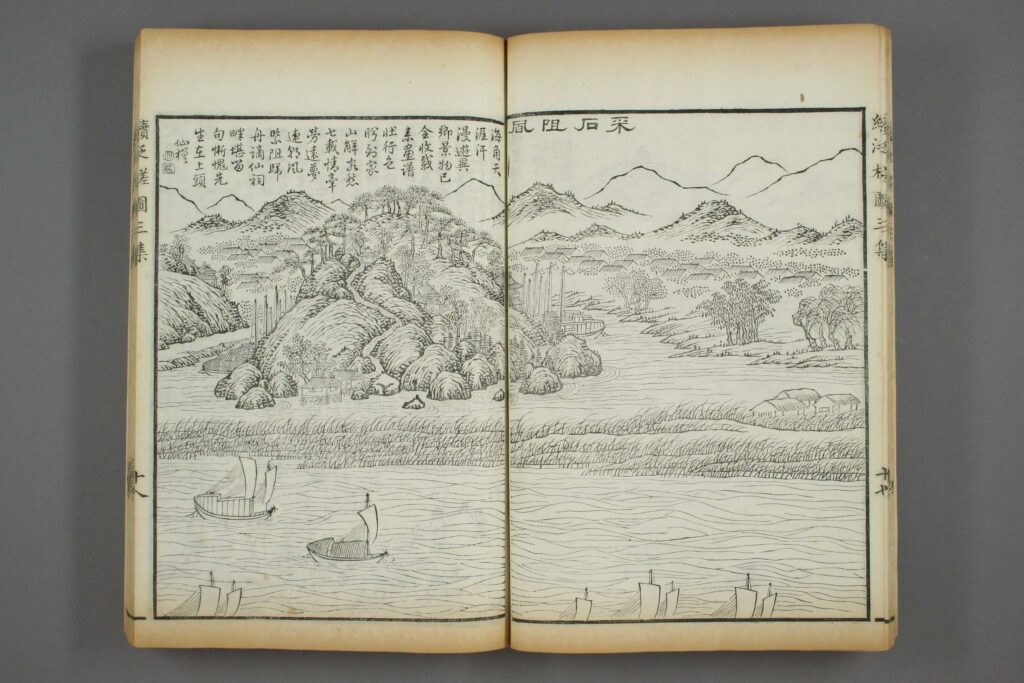

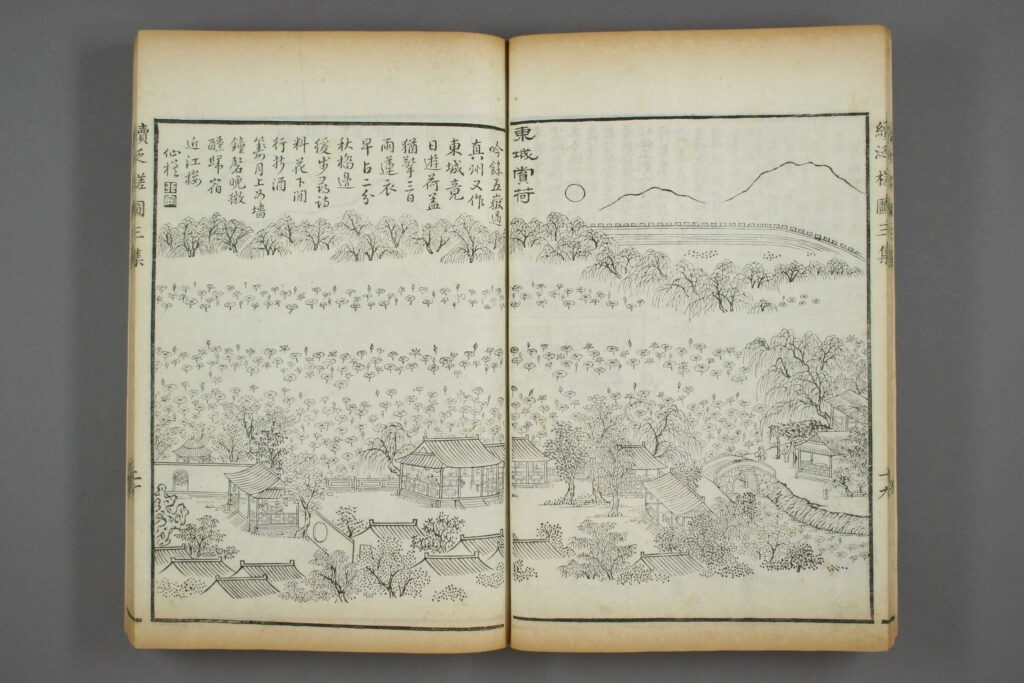





















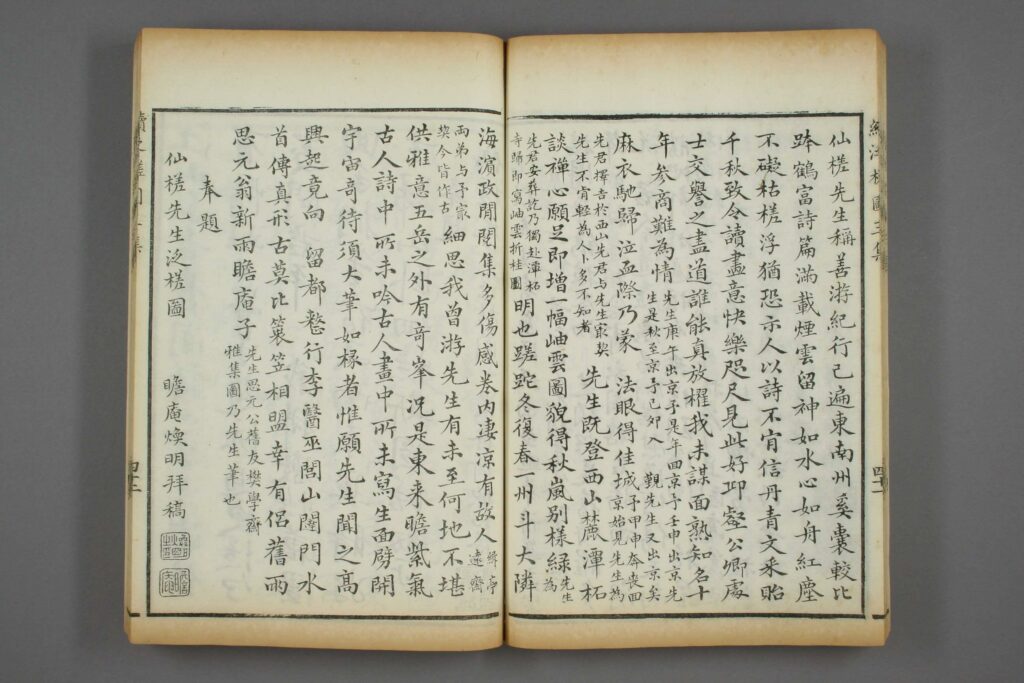




















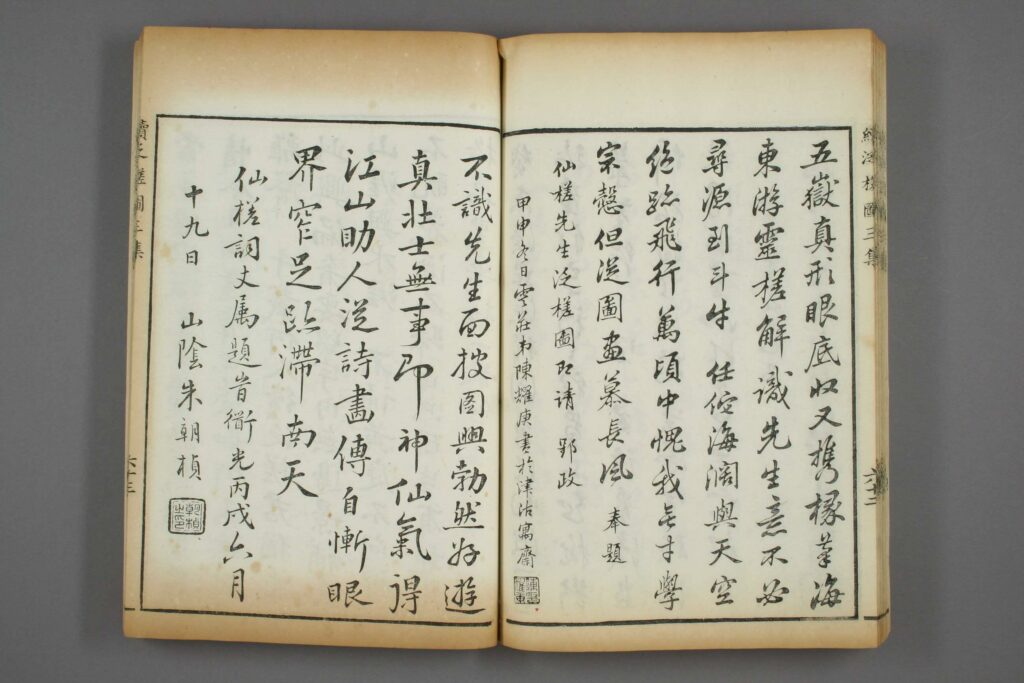







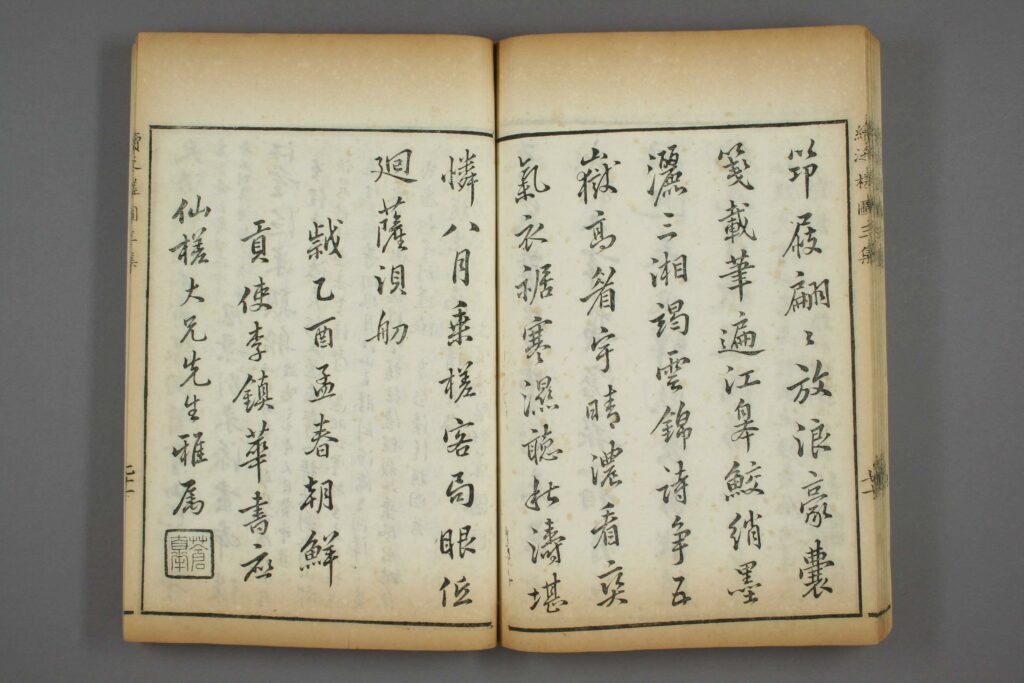
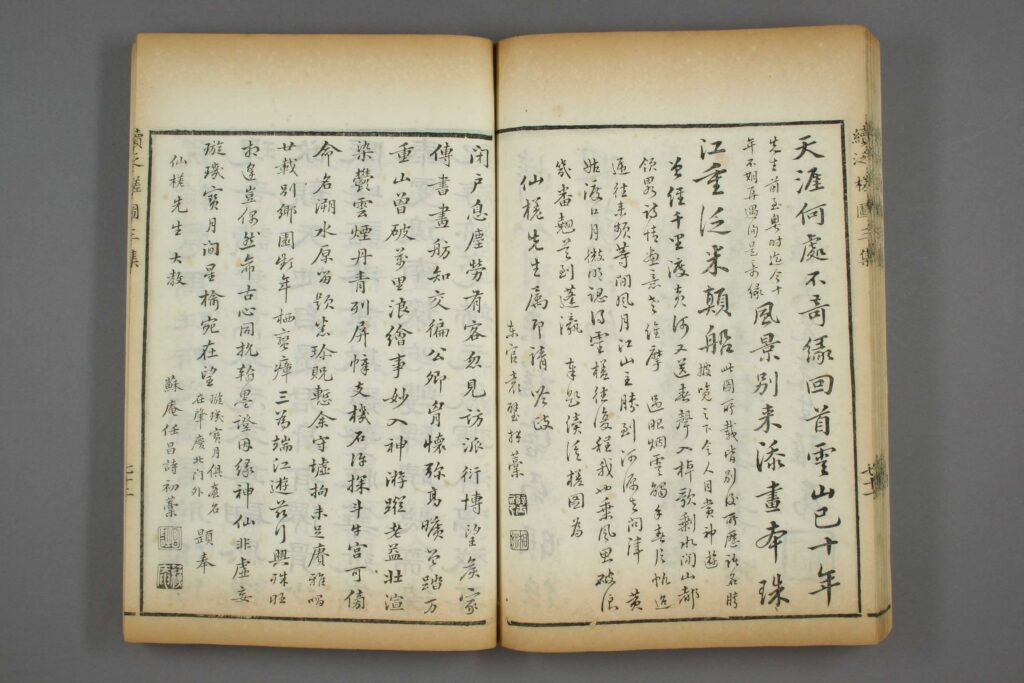































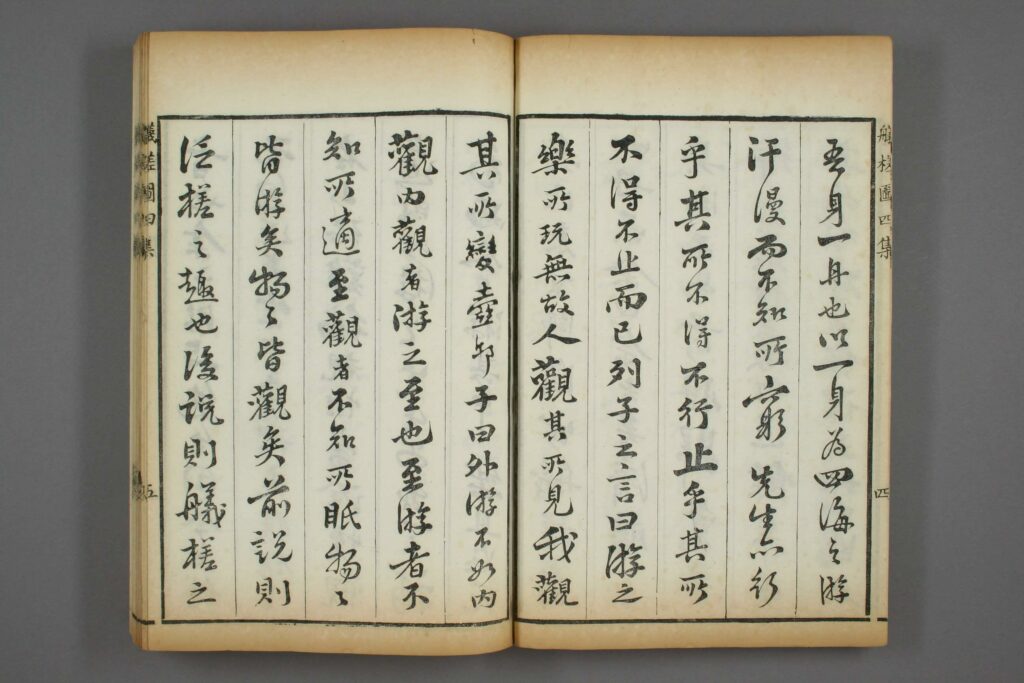






































































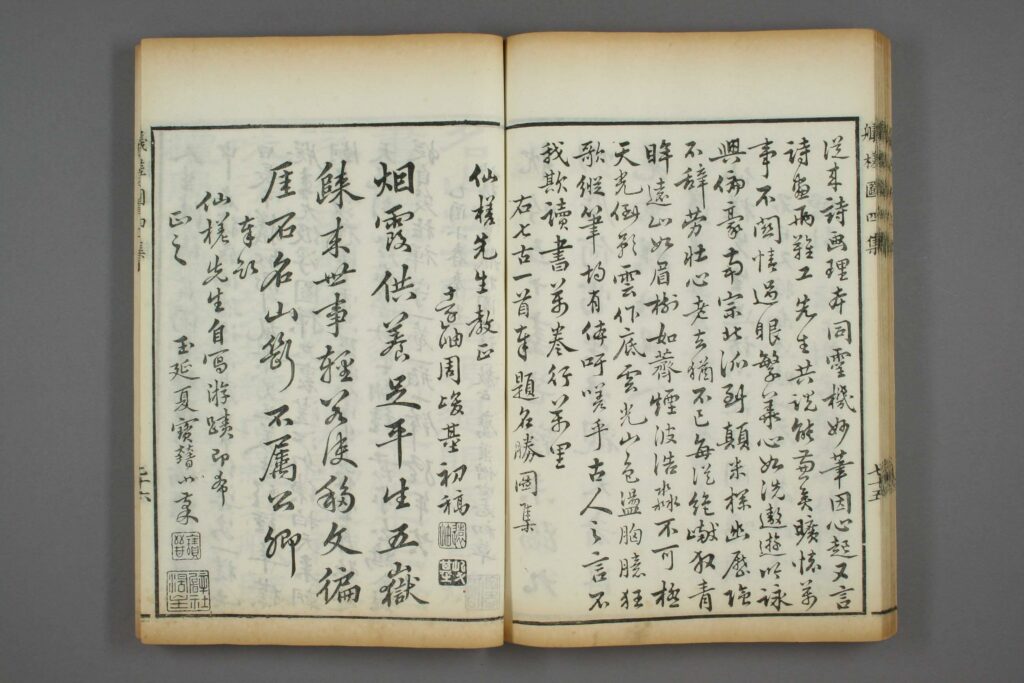






















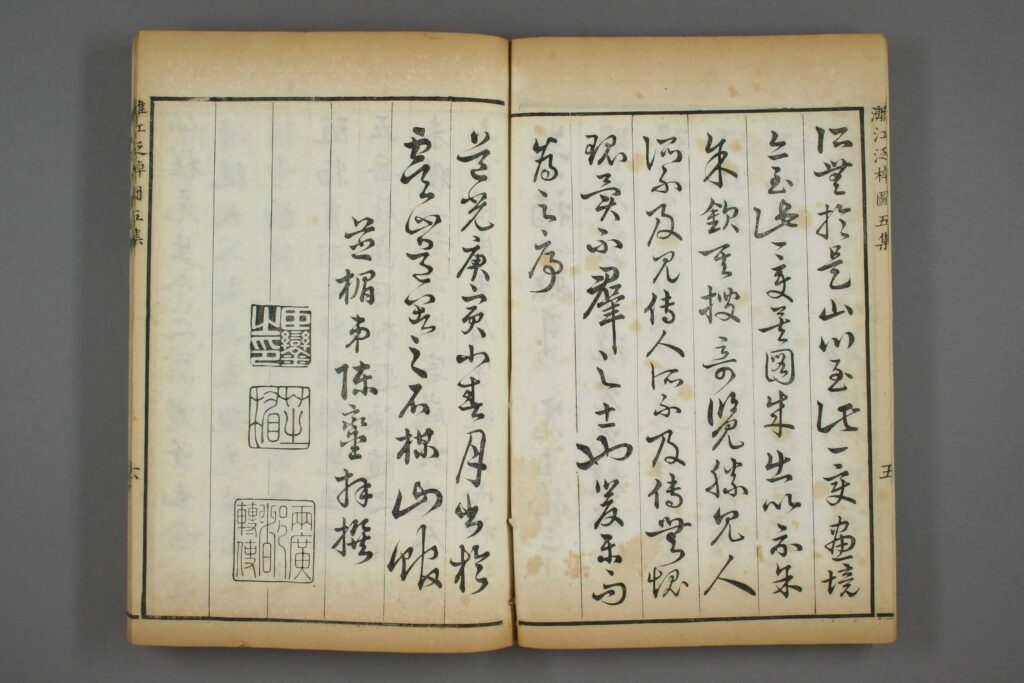














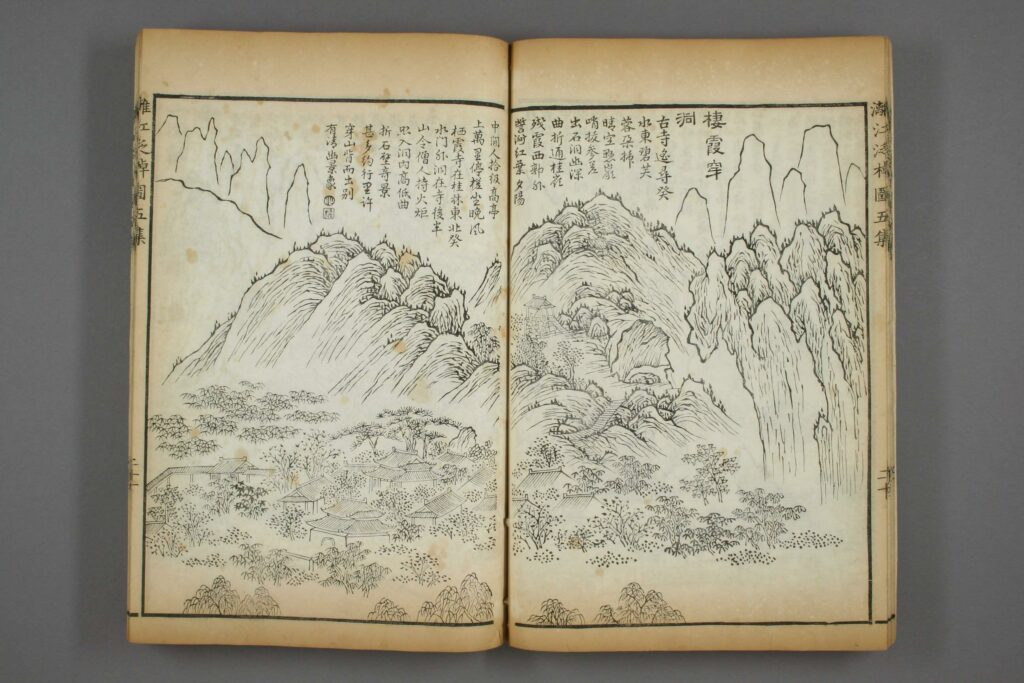






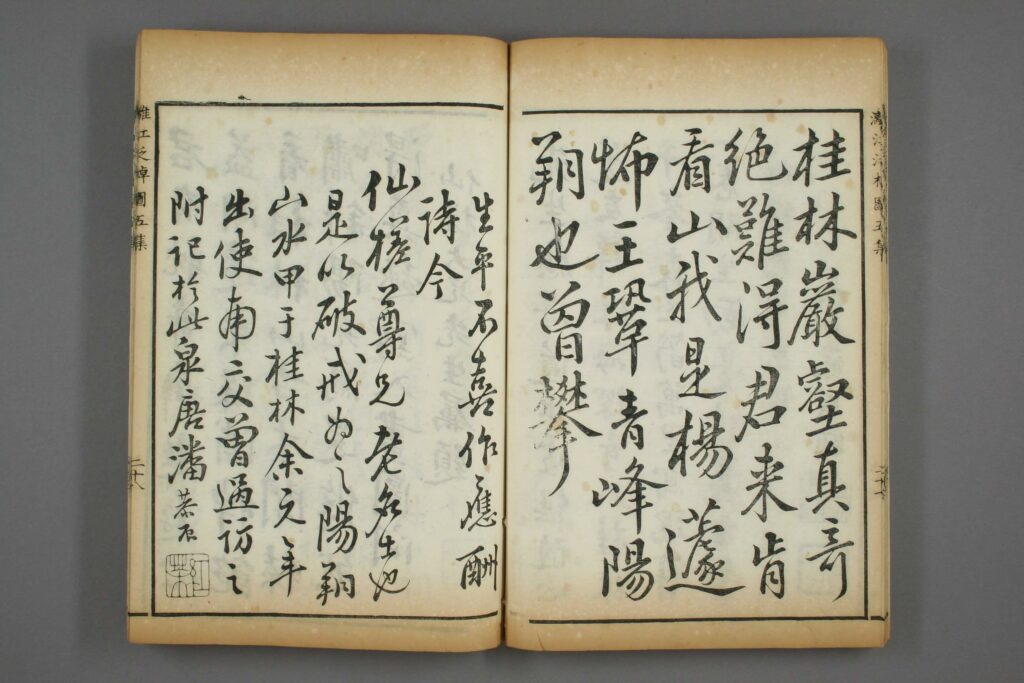























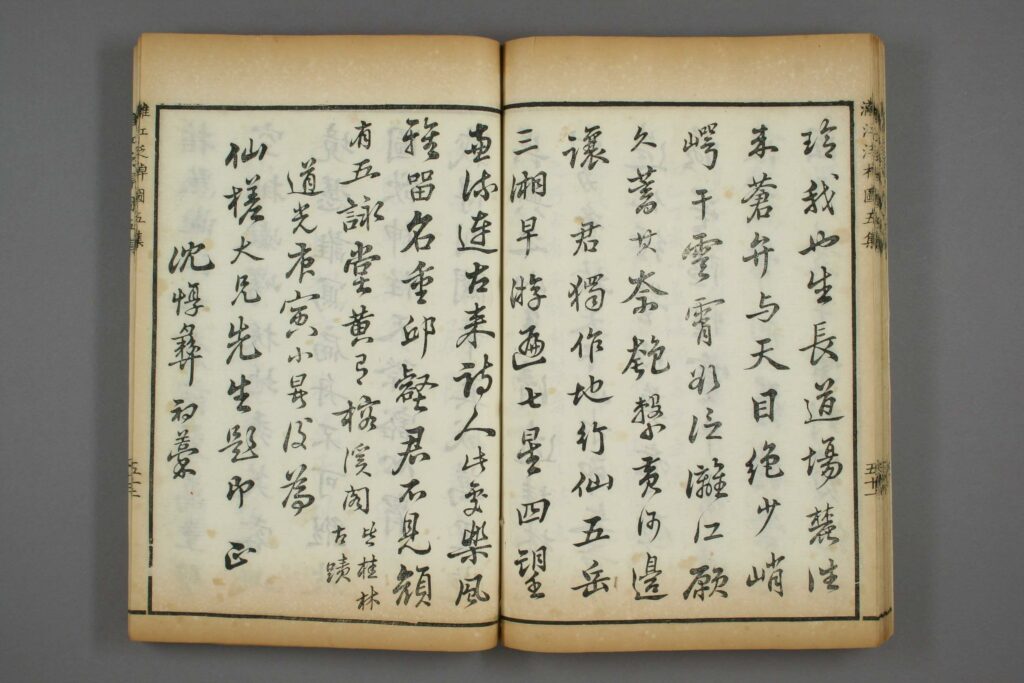








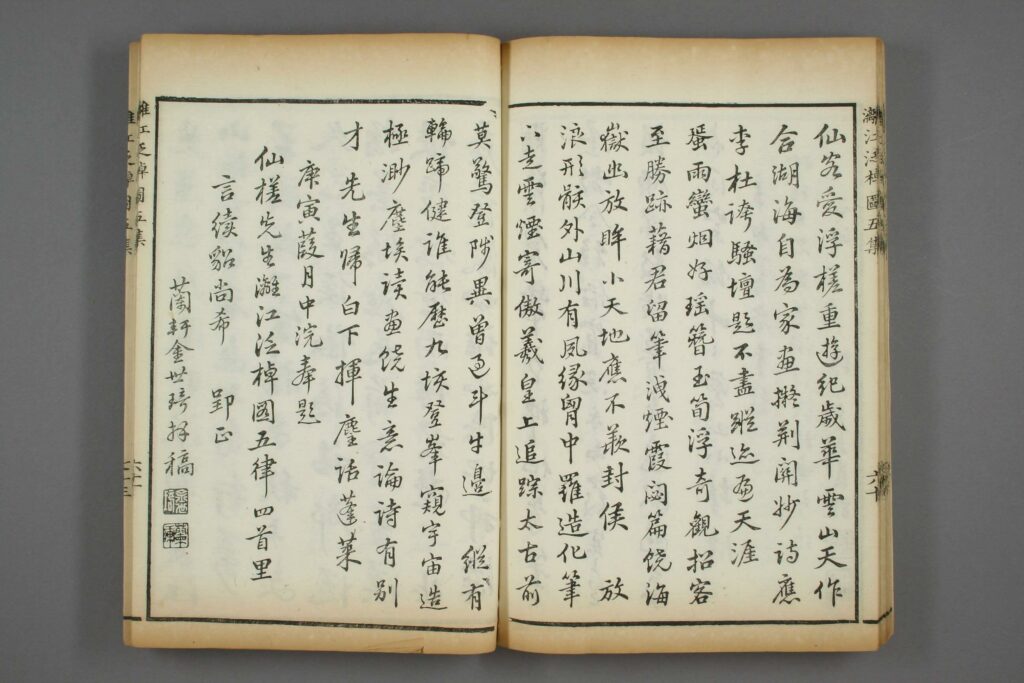














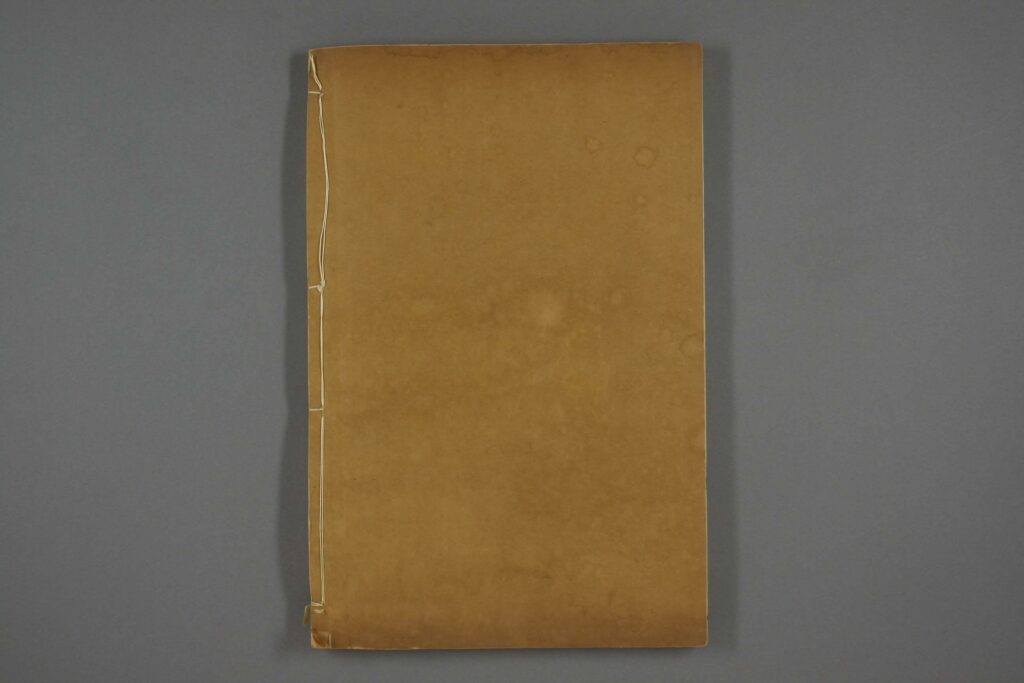










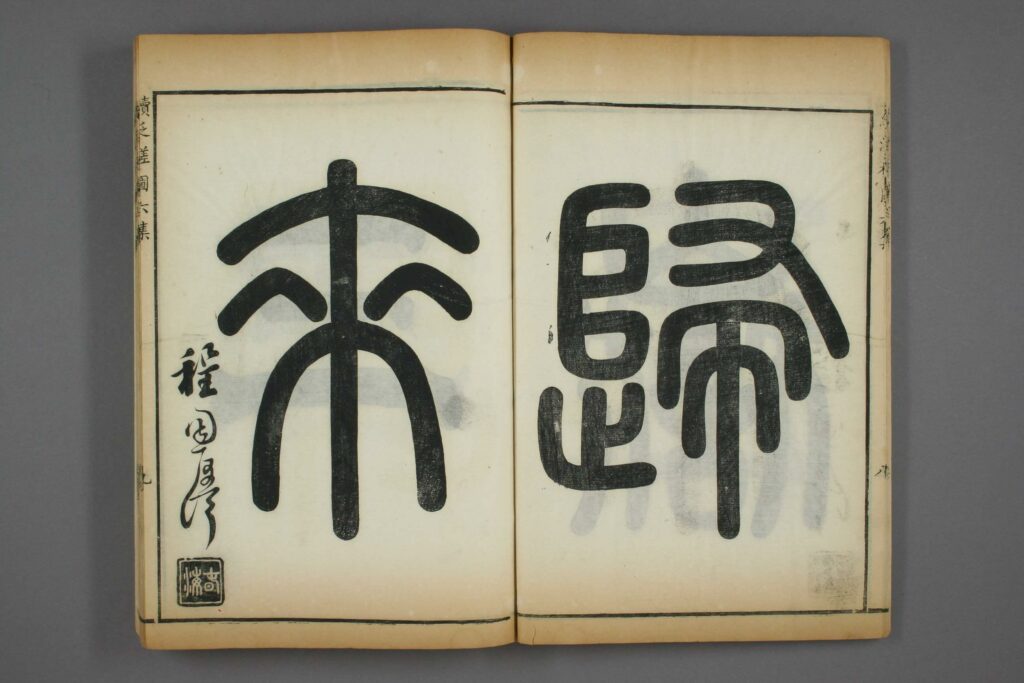














































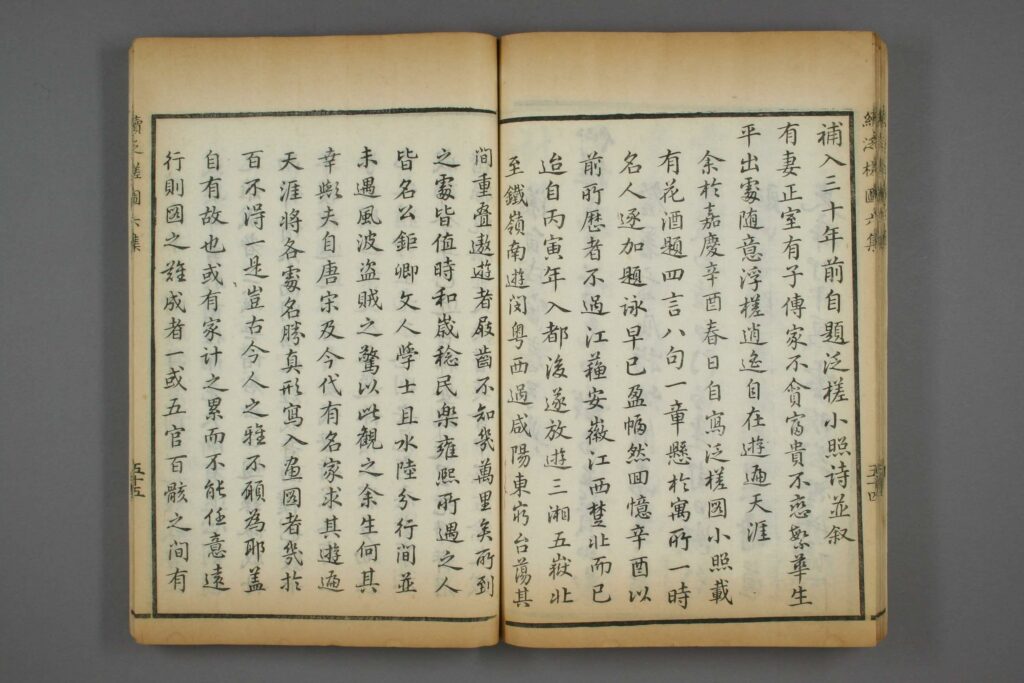


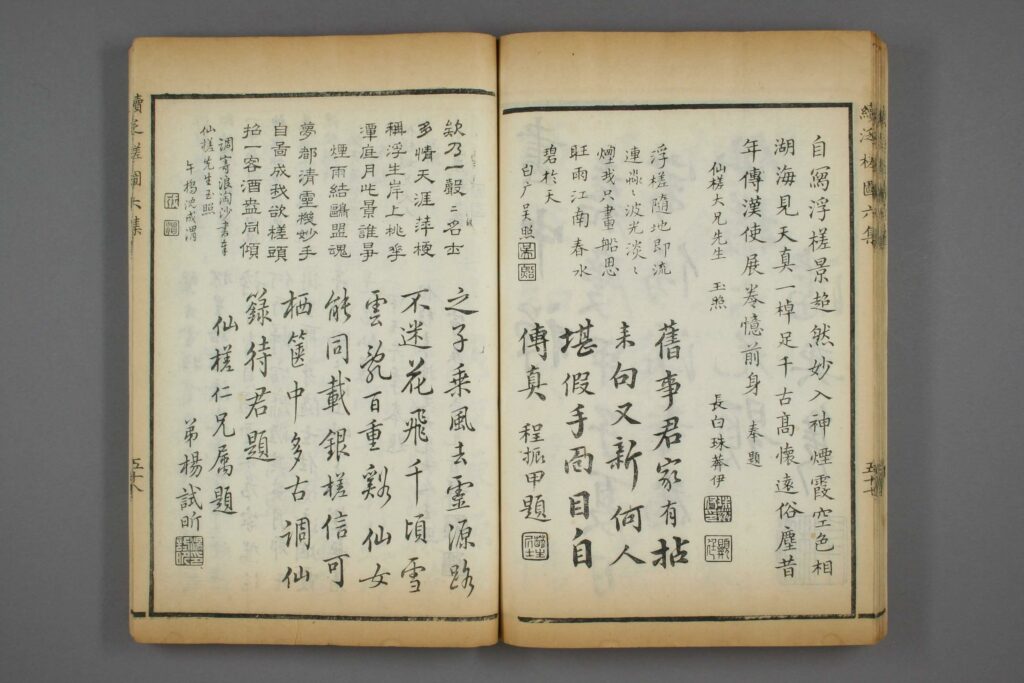
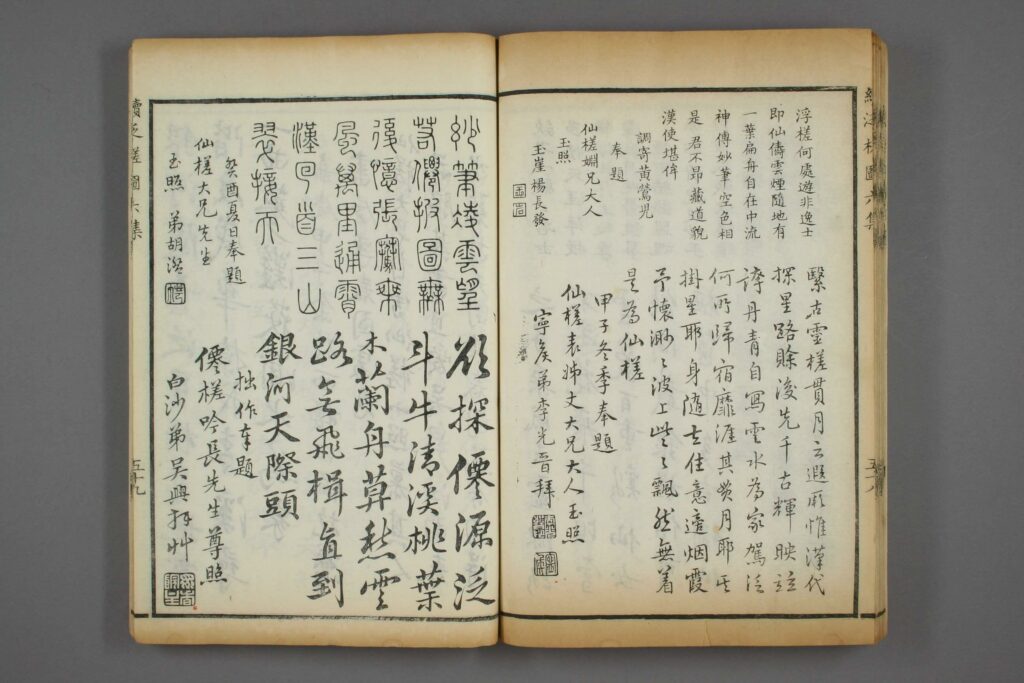










Record记录 Region地理 500P 泛槎图.含续泛槎图等.全集.清张宝撰.道光时期羊城尚古斋刊刻
历史上的今天 ( 33 ):
- 2022年-09月-24日:SEGA:割喉岛-md
- 2022年-09月-24日:SEGA:玩具总动员-md
- 2022年-09月-24日:SEGA:雷霆计划3-md
- 2022年-09月-24日:SEGA:雷霆计划2-md
- 2022年-09月-24日:Metaphysics玄学:鲁班书 (30P)
- 2022年-09月-24日:China国内合集:中国清代外销画.建筑.陈设.家具.船只 (188P)
- 2022年-09月-24日:China国内合集:中国清代外销画.神话.人物.刑罚.官场 (256P)
- 2022年-09月-24日:Giant伟人:毛泽东画传04走上井冈 (85P)
- 2022年-09月-24日:Kungfu武学:《八卦掌》 (255P)
- 2022年-09月-24日:Kungfu武学:《八卦掌》刘敬儒 (363P)
- 2022年-09月-24日:Region地理:达文西博物馆 (188P)
- 2022年-09月-24日:Region地理:列宁格勒国立博物馆 (183P)
- 2022年-09月-24日:Masterpiece名著:新镌绣像西厢琵琶合刻 (60P)
- 2022年-09月-24日:Masterpiece名著:新镌批评绣像玉娇梨小传.版画插图.清.荑秋散人编次.清初刊本 (23P)
- 2022年-09月-24日:Masterpiece名著:六朝怪谈 (126P)
- 2022年-09月-24日:Emperor帝王:中华帝王大全 (111P)
- 2022年-09月-24日:Video视频:婀娜多姿,满面桃花
- 2022年-09月-24日:News新闻:9月24日,星期六,在这里每天60秒读懂世界!
- 2022年-09月-24日:Video视频:最美三母女,很是漂亮
- 2022年-09月-24日:Video视频:好多美女,一次看个够
- 2022年-09月-24日:Video视频:来感受下,浪漫爱情故事
- 2022年-09月-24日:Video视频:高速开车,不穿裤子?
- 2022年-09月-24日:Video视频:新骗术,要小心
- 2022年-09月-24日:Video视频:臀功了得,叹为观止
- 2022年-09月-24日:Video视频:一直相信,真爱无价
- 2022年-09月-24日:Video视频:为什么要打架,女孩子家家
- 2022年-09月-24日:Video视频:美女,可以多发几个
- 2022年-09月-24日:Video视频:海滩上,偶遇俏佳人
- 2022年-09月-24日:Video视频:她上辈子,一定是嫦娥
- 2022年-09月-24日:Video视频:说实话,没见过这么漂亮的
- 2022年-09月-24日:Video视频:一起来练,臀上功夫
- 2022年-09月-24日:Reading读物:鹿鼎记-金庸
- 2022年-09月-24日:Lilliputian连环画:抗美援朝画库02 (99P)
可点 ➠ 2023年-09月-24日 ➠ 25 s ➠ ♥ 0

